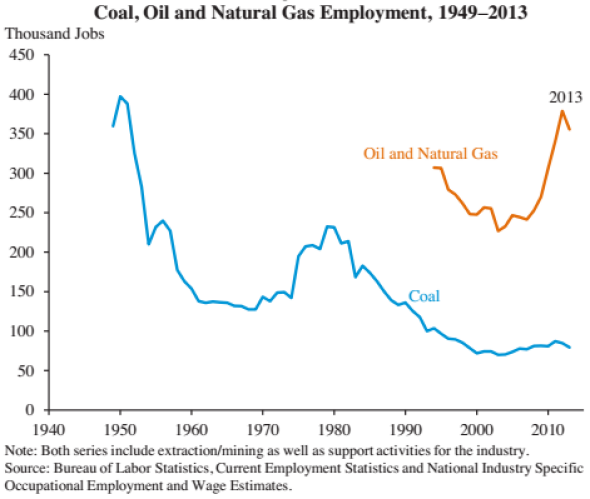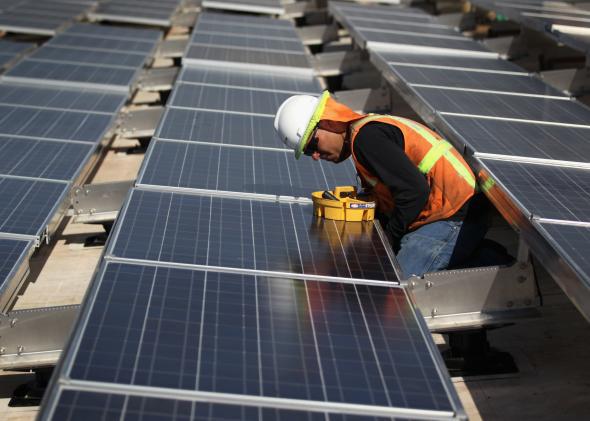My colleague Dan Gross has a great piece on Slate about the green energy business’ latest coup: Companies like Apple are now buying mass quantities of solar power, as its production costs have fallen far enough in some regions to compete economically with fossil fuels. This, of course, bodes well for the future of renewables; it’s one thing when local governments start purchasing solar- or wind-generated electricity as a political gesture; it’s a whole other when the private sector jumps on board for the sake of dollars and cents.
Anyway, Dan’s article reminded me of a cool tidbit I noticed in last week’s Economic Report of the President: While solar may just be gaining traction with corporate America, by some measures it already employs more workers than coal mining.
Here’s the story in two graphs from the White House. First the decline of big coal, which according to the Bureau of Labor Statistics directly employs about 80,000 workers these days.

And now, the rise of solar. While BLS doesn’t break out data for the industry, the Solar Foundation conducts a censuslike survey of employers to track employment trends. As of now, it counts almost 174,000 workers.
You can argue about whether this specific comparison is fair since, as PolitiFact has reported, other organizations have estimated much higher levels of coal industry employment. A survey by the U.S. Mine Safety and Health Administration, for instance, reports that there are more than 123,000 coal workers if you include contractors at mines. Add in transportation jobs, such as the hands who move coal on rail or barges, and the National Mining Association says the industry directly employees some 195,000 Americans.
Which number should we rely on? Its a little tough to say. Contractors at mines should obviously be counted. Transport workers are a little trickier, since many of them might still be working if, say, their railroad retooled in order to ship other kinds of freight. But even if you give the trade-group figures the benefit of the doubt, and concede that coal currently supports more jobs than solar, that could change by next year: The Solar Foundation projects industry employment will grow to 210,000 by the end of 2015.
Whether that’s sustainable is an open question. Most solar workers are hired to do installations. Presumably, as solar’s growth rate slows down at some point in the future, some of those jobs will naturally disappear. And, as Grist notes, that day could come sooner rather than later, as an important federal tax credit for renewables is scheduled to expire in 2017. So, from an employment perspective, coal may have a built-in advantage—you need workers to constantly dig more of it out of the ground to burn. Of course, that’s also coal’s biggest problem.
